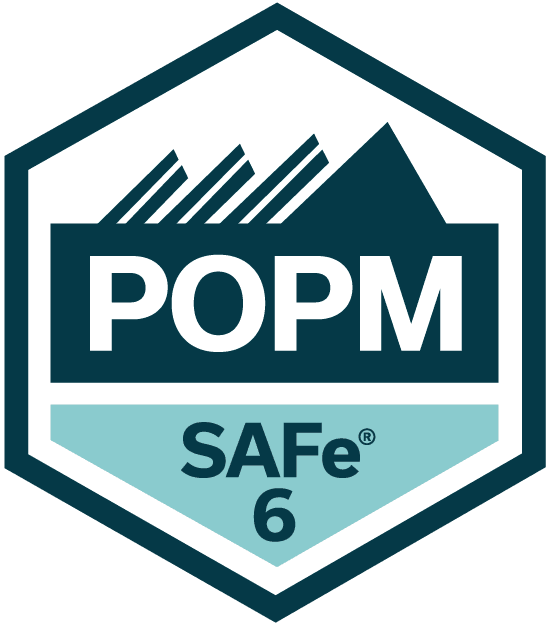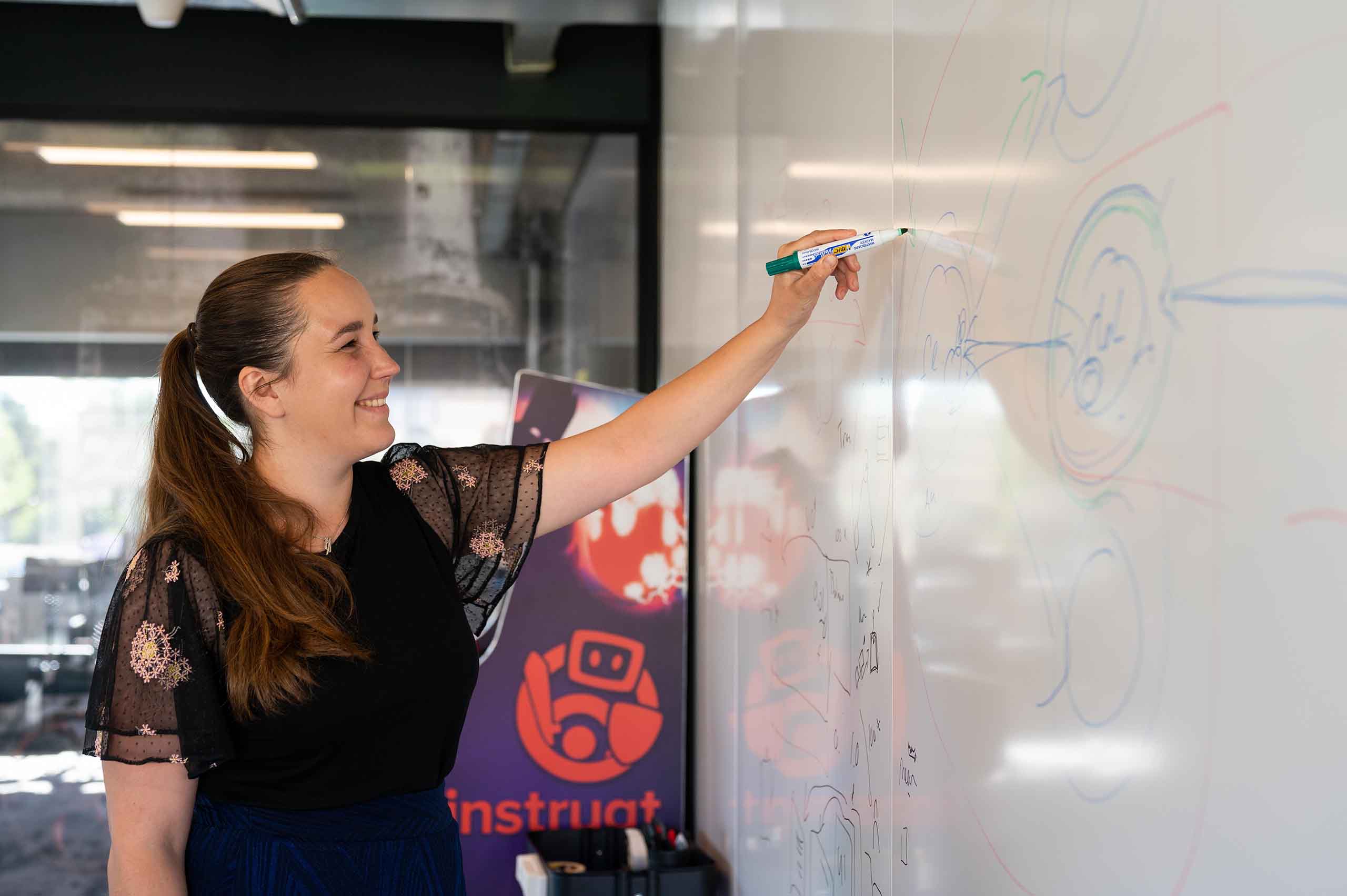Certified SAFe Product Owner/Product Manager
26 juni, 2025 – Hilversum, The Netherlands
Word een gecertificeerde Product Owner (PO) of Product Manager (PM) met deze tweedaagse SAFe training. Perfectioneer de vaardigheden die je nodig hebt om uit te blinken in je rol binnen een grootschalige Agile-omgeving. Of je nu voor het eerst met Agile werkt of je kennis wilt vergroten, deze training is jouw weg naar succes. Bovendien kun je het Scaled Agile Academy SAFe POPM-examen doen en je certificering verdienen.
Perfectioneer je PO- of PM-vaardigheden, zodat ze bij SAFe passen!
Heb je een vraag over de training?
Michiel beantwoordt graag jouw persoonlijke- of in-company gerelateerde vragen.
Neem contact opDuur
2 dagen
Tijd
09:00 – 17:00 (GMT +2:00)
Taal
Engels
Lunch
Included
Certificering
Ja
Level
Professional
Wat ga je leren?
Ontdek hoe SAFe-principes van toepassing zijn op jouw functie en leer effectief samen te werken via Lean Portfolio Management. Ontdek de geheimen van het opzetten van een continue waardestroom door middel van Program Increment Planning en voldoe aan de behoeften van gebruikers door het prioriteren en uitbrengen van nieuwe functionaliteit. Na deze training ben je volledig uitgerust om uit te blinken als SAFe Product Owner of Product Manager.
Belangrijkste leerdoelen
- De rol van Product Owner/Product Manager in een SAFe-omgeving onder de knie krijgen.
- Een goed begrip krijgen van Agile en SAFe principes.
- Effectief samenwerken met Lean Portfolio Management.
- Een continue stroom van waarde creëren door middel van Program Increment Planning.
- Maak gebruik van de kracht van continue levering en de DevOps-cultuur.
- Behaal uw Certified SAFe® Product Owner/Product Manager certificaat.
Programma
Tijdens deze uitgebreide training duik je als Product Owner of Product Manager in de wereld van SAFe. Een goed begrip krijgen van je rol, taken en verantwoordelijkheden binnen een Agile-omgeving.
- Lean, Agile & SAFe: Ontdek de impact van deze principes op Product Owner of Manager rollen.
- Behoeften van klanten en gebruikers: leer hoe je deze continu kunt blootleggen.
- Agile releasetrain & planningsintervallen: Succesvolle implementatie van functies.
- Continuous Delivery & DevOps-cultuur: Meer waarde leveren.
- Profiel PO/PM: Diepgaande rolbeschrijving, verantwoordelijkheden en activiteiten.
Voor wie is het?
Deze training is ideaal voor huidige Product Owners en Product Managers die willen uitblinken in een Agile omgeving. Daarnaast zal deze cursus nuttig zijn voor Business Analisten, Informatie Analisten en Test Managers, of degenen die de overstap maken naar deze rollen binnen een SAFe omgeving.
Vereisten
Om mee te kunnen doen, moet je een goed begrip hebben van de basisprincipes van Agile/LEAN
Minstens zes maanden ervaring hebben in een van de genoemde functies.
Waarom zou je deze training volgen?
Expertise opdoen
Ervaring opdoen in het schalen van Agile methodologieën voor bedrijfsomgevingen.
Praktische vaardigheden verwerven
Leer praktische vaardigheden om structuur, strategie en teams op elkaar af te stemmen voor effectieve samenwerking en het leveren van waarde.
Verhoog je marktwaarde
Verhoog je marktwaarde met een wereldwijd erkende Certified SAFe® Product Owner/Product Manager certificering van Scaled Agile Academy.
Examen en certificering
De Certified SAFe Product Owner/Product Manager training wordt afgesloten met een online multiple-choice examen, inbegrepen in de cursusprijs. Houd er rekening mee dat je alle cursusdagen aanwezig moet zijn om deel te nemen aan het examen. Het examen moet online worden afgenomen binnen 30 dagen na de laatste trainingsdag.
Als je slaagt, ontvang je je Scaled Agile Academy certificaat, plus:
- Examendetails
- Examennaam – SAFe Product Owner/Product Manager 6.0 Examen
- Examenvorm – Meerkeuze
- Examenuitvoering – Webgebaseerd (single-browser), gesloten boek, geen hulp van buitenaf, getimed.
- Examen toegang – Kandidaten hebben toegang tot het examen binnen het SAFe Community Platform na het afronden van de SAFe 6.0 Product Owner/Product Manager cursus.
- Duur van het examen – Zodra het examen begint, hebben kandidaten 90 minuten (1,5 uur) om het af te ronden.
- Aantal vragen – 45. Sommige vragen zijn meer punten waard dan andere. Bijvoorbeeld, een vraag waarbij je 3 van de 4 opties selecteert is meer punten waard dan een waar of onwaar vraag.
- Voldoende score – 35 van de 45 vragen (78%)
- Taal – Engels
- Kosten examen – De eerste poging is inbegrepen als onderdeel van het inschrijfgeld voor de cursus als het examen binnen 30 dagen na de cursus wordt afgelegd en voor middernacht op de laatste dag wordt afgerond. Elke herkansingspoging kost $50.
- Herkansingsbeleid – Een tweede poging op het examen (eerste herkansing) kan onmiddellijk na de eerste poging worden gedaan. Bij de derde poging moet je 10 dagen wachten. Bij een vierde poging moet je 30 dagen wachten. Neem contact op met academy@xebia.com voor vragen over het herexamenbeleid.
Als je slaagt, ontvang je je Scaled Agile Academy certificaat, plus: - Officieel SAFe® Product Owner/Product Manager (POPM)-certificaat
- Digitale badge van het certificaat (om online te delen en te promoten)
- Een jaar lang gecertificeerd lidmaatschap als SAFe Product Owner/Product Manager, wat toegang geeft tot de POPM Community of Practice.
- Toegang tot een reeks leermiddelen om gecertificeerde professionals te ondersteunen tijdens hun SAFe-reis

Hoe ziet het eruit?
Wat moet je nog meer weten?
Nadat je je hebt ingeschreven voor deze cursus, ontvang je een bevestigingsmail met praktische informatie. Een week voor de training vragen we naar eventuele dieetwensen en delen we relevante literatuur als je je moet voorbereiden.
Tot ziens!
Vereisten
Uitgebreid 2-daags programma in het Engels.
Het online meerkeuze-examen en de daaropvolgende certificering zijn bij de prijs inbegrepen.
Alle digitale cursusmaterialen en een heerlijke lunch op elke cursusdag zijn inbegrepen.
Reis- en verblijfkosten zijn niet inbegrepen
Maak kennis met de trainers

Laurens Bonnema
Laurens Bonnema is a Professional Scrum Trainer (PST) at Xebia Academy. Other topics: scaling, leadership and Obeya.

Bart Bouwers
Bart Bouwers is a seasoned Agile consultant and trainer at Xebia Academy with a passion for helping teams work better together in a customer-centric manner.
Serge Beaumont
Meet Serge Beaumont, trainer at Xebia Academy. Serge teaches a broad range in Agile Scaling training courses.

Jarl Meijer
Meet Jarl Meijer, trainer at Xebia Academy. Jarl is a SAFe Program Consultant (SPC) and specialized agile management trainer and trains on behalf of Xebia the Certified leading SAFe courses and Agile Project Management.

Tom Siebeneicher
Tom Siebeneicher is an Agile trainer at Xebia Academy and an expert in digital and agile transformations.







